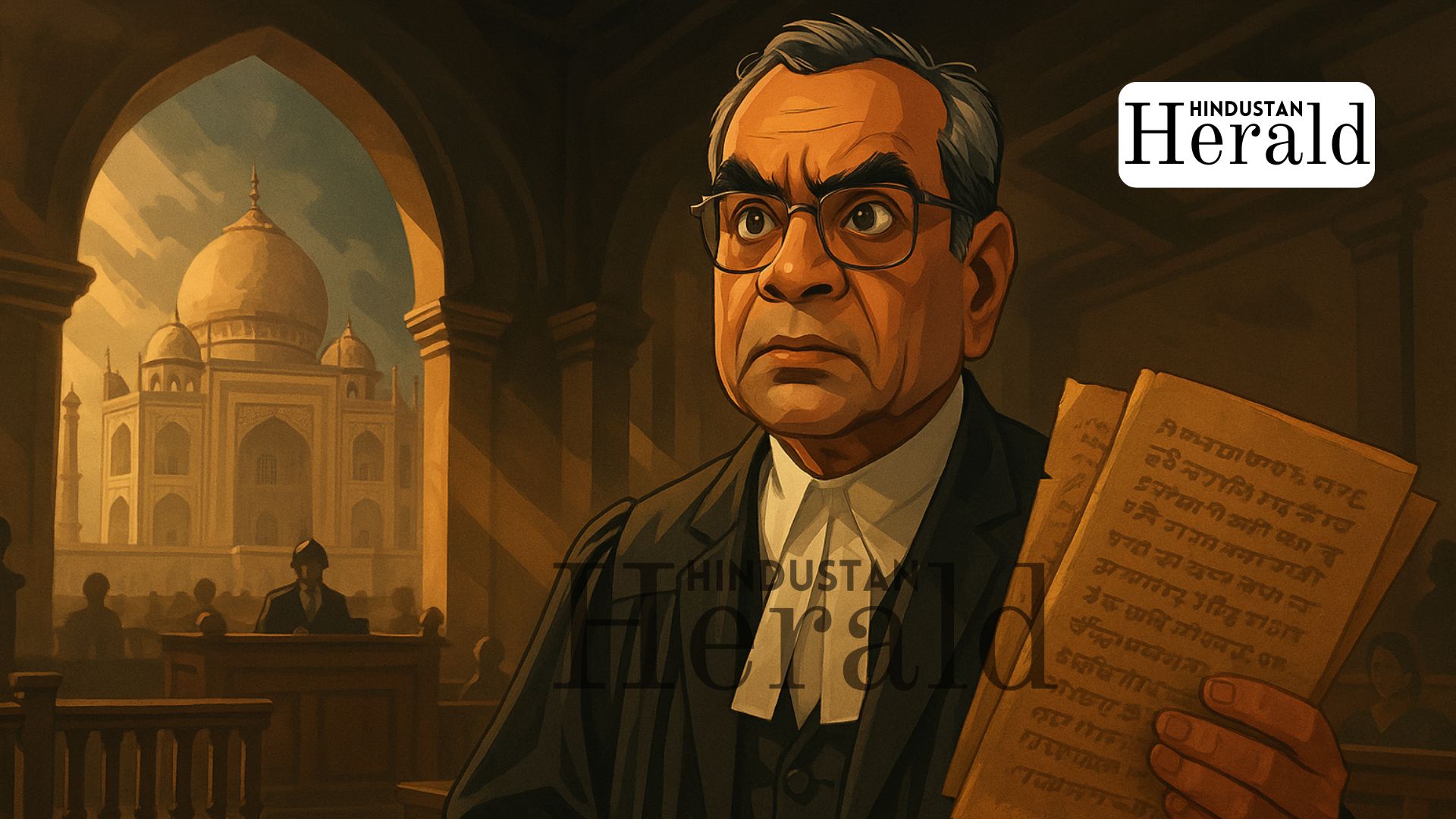New Delhi, October 18: It began with a poster that lasted barely a day the Taj Mahal, its dome lifting off like a lid, and a glint of a Shiva idol inside. Within hours, the internet went wild. What was meant to be a movie teaser turned into a national shouting match.
At the heart of it is Paresh Rawal, one of Hindi cinema’s most respected faces, now caught in the middle of a debate about history, religion, and what Bollywood should or shouldn’t touch.
The film is called The Taj Story. And it’s already split the room.
A Trailer That Poked the Nerve
The trailer opens quietly, the camera moves through the arches of the Taj, a guide’s voice floating in. Then, in a packed courtroom, Rawal’s character, Vishnu Das, stands up and says, almost casually, that he wants a DNA test of the Taj Mahal.
The room freezes. The audience watching the trailer probably did too.
That single line “For some it’s a tomb, for others a temple” became the spark.
Director Tushar Amrish Goel calls it a historical courtroom drama. The tagline, “Every truth has two sides,” sounds harmless enough. But the subtext, for many, isn’t.
Within hours of the trailer’s release, social media was in overdrive. Historians accused the film of “laundering conspiracy theories,” while others defended it as a filmmaker’s right to ask uncomfortable questions.
The Poster That Crossed the Line
Before the trailer, there was the now-infamous poster. It showed the dome of the Taj being lifted, revealing a Shiva linga beneath. For many, that was one image too far.
The blowback was immediate. Activists called it a provocation; historians called it lazy myth-making. The producers tried to contain the fire, saying the film “does not touch religion” and is “based purely on historical research.” Rawal himself urged people to wait and watch before judging.
But in the age of instant outrage, that appeal barely registered. The poster was taken down. The noise stayed.
The History Everyone’s Fighting Over
The Taj Mahal has long been at the crossroads of politics and heritage. Built by Mughal emperor Shah Jahan for his wife Mumtaz Mahal, it’s one of the world’s most studied monuments. Yet, for years, fringe claims have circulated that the Taj was once a Hindu temple called Tejo Mahalaya.
The idea first gained traction through writer P.N. Oak, whose theories have been repeatedly debunked. The Supreme Court has dismissed petitions based on them, calling such claims speculative and lacking evidence.
So when a mainstream Bollywood film flirts with the same idea, it doesn’t just poke history it steps into political quicksand.
The Censors Step In
The Central Board of Film Certification (CBFC) didn’t clear The Taj Story without questions. According to sources cited by The Times of India, the board demanded references and historical citations to back the film’s claims before giving it the green light.
Meanwhile, the Kerala High Court is now looking into a petition challenging the CBFC’s approval. In an unusual move, the bench has decided to watch the film itself before issuing a verdict. There’s no stay yet, but the scrutiny is real.
Despite all this, the release date October 31 stands unchanged.
Paresh Rawal Speaks, the Internet Roars
Rawal has tried to keep things measured. “We’re not attacking anyone’s faith,” he told reporters, “It’s about asking questions, not giving answers.”
But his own teaser line “The lock is about to break on the Taj Mahal’s biggest mystery,” is pure gasoline for the discourse.
That said, few doubt his acting chops. He’s done everything comedy, politics, tragedy. Maybe that’s why this controversy cuts deeper: people expect Rawal to stand above noise, not wade into it.
Yet, here he is playing a man who literally takes the Taj Mahal to court.
Why This Story Matters
Every time Indian cinema tries to touch history, tempers flare. Padmaavat faced protests before anyone saw a frame. The Kashmir Files sparked political rallies. The Taj Story might soon join that list.
Because it’s not really about what the film says, it’s about what people think it might be saying.
To some, this is creative freedom. To others, it’s cultural revisionism. And somewhere in between lies the messy middle: a movie that’s neither propaganda nor harmless fiction, but something stranger, a reflection of the country’s current mood.
The Taj Mahal has survived emperors, wars, and centuries of argument. It will survive this, too. But for now, the monument stands quietly in Agra, while the rest of India argues over its soul.
What Comes Next
There’s talk of new petitions. The censor board might come under more pressure. The film could still get trimmed or delayed or, more likely, open on time to packed theatres.
Either way, on October 31, when the lights go down and Paresh Rawal walks into that courtroom again, the real verdict won’t come from the judge on screen. It’ll come from the audience outside a billion-strong jury, divided as ever.
Stay ahead with Hindustan Herald — bringing you trusted news, sharp analysis, and stories that matter across Politics, Business, Technology, Sports, Entertainment, Lifestyle, and more.
Connect with us on Facebook, Instagram, X (Twitter), LinkedIn, YouTube, and join our Telegram community @hindustanherald for real-time updates.
Covers films, television, streaming, and celebrity culture with a focus on storytelling trends.






